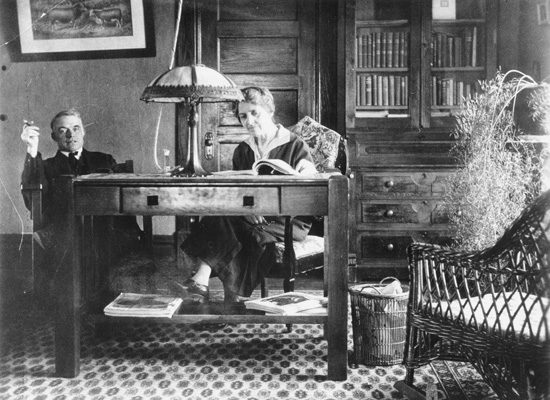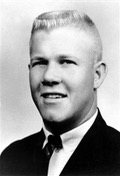What compels a man to take the life of the women with whom he shares a most intimate bond? Could the murderous destruction of one’s maternal connection or a sacred marital union somehow disinhibit a killer to commit violence on a much grander scale? In three of the four U. S. school massacres with the highest death toll, the white male perpetrators claimed the lives of a wife or mother (or both) as their first victims – the notable exception being South Korean born Seung-Hui Cho, the Virginia Tech shooter.
University of Texas Tower Shooting – August 1, 1966
Charles Whitman’s shooting rampage from atop the UT tower was the deadliest shooting on a college campus until Seung-Hui Cho killed 32 people and wounded 17 more at Virginia Tech forty years later in 2007. The night before Whitman’s tower attack, he murdered his wife, Kathy, in the couple’s home and his mother, Margaret, in her apartment. Both bodies were found in their beds with the blankets pulled up to cover where Whitman had stabbed each woman in the chest with a hunting knife.
Bath School Disaster – May 18, 1927

Andrew and Nellie Kehoe
Thirty-nine years prior to Whitman’s campus shooting, on May 18, 1927, Andrew Kehoe, a farmer in Bath Township, Michigan detonated bombs at Bath Consolidated School, killing 36 children and 2 teachers. Shortly after the school explosion, Kehoe detonated a bomb in his truck, which was filled with shrapnel, killing himself and the school superintendent as well as 3 bystanders. Earlier that morning, Kehoe had firebombed his house and farm buildings. Only the chicken coop, where his wife Nellie’s charred body was later found, was not destroyed. The Bath School disaster is the deadliest mass murder in U. S. history, resulting in a total of 44 deaths.
Sandy Hook Shooting – December 14, 2012


Another elementary school massacre in recent history took place in Newtown, Connecticut. On December 14, 2012, Adam Lanza shot and killed 20 children and 6 staff members at Sandy Hook Elementary School, then committed suicide by shooting himself. Police later found Lanza’s mother, Nancy, lying in bed with gunshot wounds to her head. The 20-year-old Lanza had killed his mother, whom he lived with, stolen her car and several guns from her collection to commit the deadliest mass shooting at a primary or secondary school in U. S. history.
Mass Killings and Domestic Violence
Even though nearly four decades separate three of the deadliest U. S. mass killings in a school setting, each of the perpetrators of these gruesome attacks first killed the women they were closest to in a private, domestic setting before escalating their violence to a public space. It is interesting to note that these men targeted not just any public place but specifically a school, a location where women and children are often present in greater numbers. According to the FBI, mass shootings at educational institutions account for some of the higher casualty counts compared to other locations. An FBI study examined 160 mass shooting incidents from 2000-2013 and found that 39 incidents occurred in educational environments, resulting in 117 individuals killed and 120 wounded. In 4 of the 9 incidents where the shooter first killed one or more family members in a residence before moving to a more public location, the shootings took place at a school. Of those 9 shooters, all 3 who were married killed their wives first before continuing their shooting rampage. In fact, a total of 16 shooters in the study targeted a current, estranged or ex-wife or girlfriend.
Women disproportionately have been the victims of mass murder for decades. Given that familicides (the murder of an entire family by a family member, typically the male head of household) are the most common mass killing, there is a strong connection between domestic violence and mass murder. A 2004 study on prevalence patterns of mass murder in the U. S. from 1900-1999 found that familicides comprised nearly half of the 909 incidents that occurred in the twentieth century. Familicides were even more common prior to 1975, constituting 52% of the mass killings. Notably, a gun was the weapon of choice in 67% of incidents. The statistics have not improved in the new millennium. A recent study from Everytown for Gun Safety analyzed every mass shooting that occurred between January 2009 and July 2015, 133 mass shootings in total. They found that 50% of the victims were women and that the shooter killed a current or former spouse, intimate partner or family member in 57% of the incidents. By contrast, women comprised only 15% of total gun homicide victims in the U. S. from 2008-2012.
Whitman’s Murders: Why Were the Women Killed First?
“I imagine it appears that I bruttaly [sic] kill [sic] both of my loved ones. I was only trying to do a quick through [sic] job.”

Whitman may have killed the women he loved to spare them the shame of his homicidal plans. It’s curious that Whitman felt compelled to address the murders of his “loved ones” in letters, as though he were trying to justify killing them as an act of compassion. Perhaps the knowledge that his murderous actions would hurt and embarrass his father, whom he deeply hated, was another motivation. Whitman himself admitted his uncertainty of the true reason that compelled him to kill his wife and mother – was it selfishness, misguided altruism or insanity? In the letter left behind near Margaret Whitman’s body, he emphatically affirmed that he did indeed love his mother: “I am truly sorry that this is the only way I could see to relieve her suffering but I think it was best. Let there be no doubt in your mind that I loved the woman with all my heart.” Whitman also confirmed his continued affection for his wife, Kathy, in a typewritten letter and in post scripts written across pages of old journal entries.

But love takes a twisted form in households plagued by domestic violence and the former Kathy Leissner was Whitman’s victim long before the hunting blade pierced her chest. Charles adored his wife dearly – she was his “most precious possession” as he often wrote – but he was overly critical of her and controlling. Kathy had confided in close friends John and Fran Morgan that she couldn’t cope with her husband’s perfectionist expectations of her. Charles would wipe his hand behind pictures hanging on the wall looking for dust and his hot temper led him to hit his wife on at least three occasions. His violent outbursts terrified Kathy to the extent that family, close friends and even the landlady were aware, to varying degrees, that she feared her husband. For as much as Charles abhorred his father, he also despised how his own propensity for violence was so reminiscent of the domineering elder Whitman in spite of his best efforts to control and improve himself. Indeed, the aggressive and overbearing nature of C. A. Whitman had driven Charles’ mother, Margaret, from her turbulent twenty-five year marriage after enduring decades of beatings. Is it a coincidence that Kathy and Margaret Whitman, both victims of domestic violence at the hands of their husbands, were relieved of their lives in the same manner on the same night by a man who himself was also a victim of abuse as a youth?
“I did on many occasions beat my wife, but I loved her … . I have to admit it, because of my temper, I knocked her around.”
Domestic violence in its most extreme form is domestic homicide and the victims overwhelmingly tend to be women. There is substantial research evidencing a connection between male perpetration of domestic violence and witnessing domestic violence or experiencing abuse in childhood. In fact, studies have found that there are significant correlations between physical abuse, psychological abuse, and neglect, suggesting that if domestically violent men experienced one type of maltreatment in childhood, they were also likely subjected to other types. Symptoms of trauma in adulthood such as anxiety, depression, dissociation, sexual problems, and sleep disturbances are commonly associated with suffering and witnessing domestic violence in childhood. One study found that experiencing physical abuse and witnessing domestic violence significantly predicted future psychological spouse abuse and trauma symptoms in domestically violent men while neglect, sexual abuse, and psychological abuse significantly predicted physical spouse abuse.
While a history of domestic violence and a dysfunctional family life may have played an influential role in the Whitman homicides, it is likely that it was only one of many factors involved. In the months before the shooting, he sought help for mental illness, he was abusing prescription medication, and suffered from the emotional strain of not being financially independent, and an undiagnosed brain tumor. Any one of these elements might reasonably have been contributing factors in the murders of Kehoe’s wife or Lanza’s mother prior the notorious mass killings in Bath and Newtown. We might never fully understand the concoction of experiences, thoughts, and emotions driving men like Whitman, Kehoe, Lanza and Cho to the violence they accomplished on such a grand scale. What is clear in Whitman’s case are the residual traces of domestic abuse that affected his familial relationships in adulthood: fueling his hatred of his father, his strong desire to protect his mother by any means, and his turbulent relationship with his wife. Whitman’s childhood trauma in no way excuses the murders he later committed, but perhaps it brings us one step closer to understanding how the combination of aforementioned risk factors tipped the scales and caused this man with an intimate history of domestic abuse to turn deadly.


